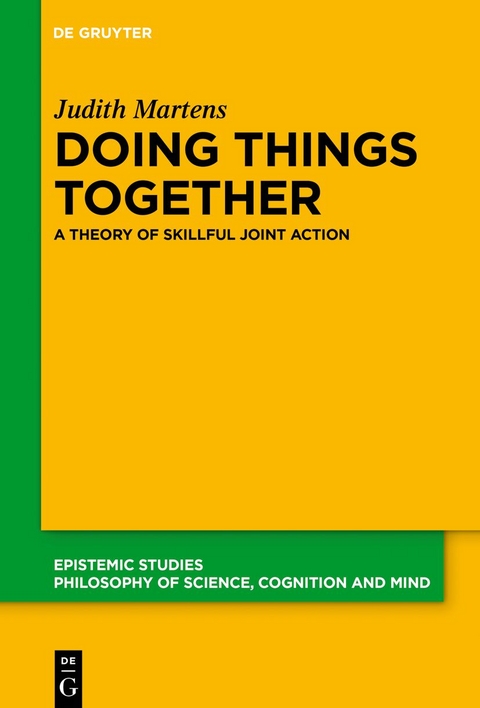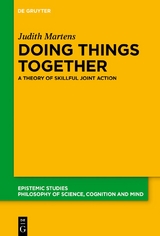Doing Things Together
A Theory of Skillful Joint Action
Seiten
This series is devoted to publishing books in the fields of epistemology, philosophy of mind, philosophy of language, and philosophy of science. It is an outstanding platform for state of the art contributions. The studies are carried out in an argumentative style and advance current debates in a significant manner. While the main publication language is English, we also welcome German language submissions. All books are peer-reviewed.
To understand many of our everyday joint actions we need a theory of skillful joint action. In everyday contexts we do numerous things together. Philosophers of collective intentionality have wondered how we can distinguish parallel cases from cases where we act together. Often their theories argue in favor of one characteristic, feature, or function, that differentiates the two. This feature then distinguishes parallel actions from joint action. The approach in this book is different. Three claims are developed: (1) There are several functions that help human agents coordinate and act together. (2) This entails that joint action should be understood through these different, interrelated, types of coordination. (3) A multidimensional conceptual space, with three levels of control and coordination, will allow us to connect these different forms of coordination and their interdependencies. This allows us to understand the jointness of an action in a more differentiated and encompassing way. This approach has ramifications for several distinctions that are typically understood to be binary, including those between action and mere bodily movement, joint action and parallel action, and action together and not together.
To understand many of our everyday joint actions we need a theory of skillful joint action. In everyday contexts we do numerous things together. Philosophers of collective intentionality have wondered how we can distinguish parallel cases from cases where we act together. Often their theories argue in favor of one characteristic, feature, or function, that differentiates the two. This feature then distinguishes parallel actions from joint action. The approach in this book is different. Three claims are developed: (1) There are several functions that help human agents coordinate and act together. (2) This entails that joint action should be understood through these different, interrelated, types of coordination. (3) A multidimensional conceptual space, with three levels of control and coordination, will allow us to connect these different forms of coordination and their interdependencies. This allows us to understand the jointness of an action in a more differentiated and encompassing way. This approach has ramifications for several distinctions that are typically understood to be binary, including those between action and mere bodily movement, joint action and parallel action, and action together and not together.
Judith Martens, University of Vienna, Austria.
| Erscheinungsdatum | 08.07.2020 |
|---|---|
| Reihe/Serie | Epistemic Studies ; 41 |
| Zusatzinfo | 8 b/w ill., 5 b/w tbl. |
| Verlagsort | Berlin/Boston |
| Sprache | englisch |
| Maße | 155 x 230 mm |
| Gewicht | 444 g |
| Themenwelt | Geisteswissenschaften ► Philosophie |
| Schlagworte | Coordination • Gemeinsames Handeln • Joint Action • Kompetenz • Koordination • Skill • Social Interaction • Soziale Interaktion |
| ISBN-10 | 3-11-067017-8 / 3110670178 |
| ISBN-13 | 978-3-11-067017-2 / 9783110670172 |
| Zustand | Neuware |
| Informationen gemäß Produktsicherheitsverordnung (GPSR) | |
| Haben Sie eine Frage zum Produkt? |
Mehr entdecken
aus dem Bereich
aus dem Bereich
wie Philosophie uns helfen kann, unseren Weg zu finden
Buch | Hardcover (2023)
dtv Verlagsgesellschaft
CHF 39,90




